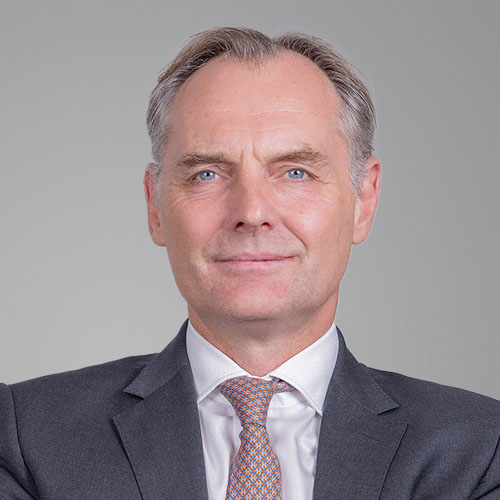Mr Faller, how has the geopolitical uncertainty of recent years influenced the behaviour of institutional investors?
Geopolitics is not necessarily the main driver behind the strategic investment decisions of institutional investors. In 2022, the rise in inflation marked the end of the zero-interest-rate era. For example, this shift in interest rate policy had a much greater impact on the behaviour of institutional investors; even those who had anticipated a rate hike were surprised by the abruptness and magnitude of the increase.
What impacts did this have?
Previously, large amounts of capital had flowed into private markets. With the sharp correction in fixed income securities following the rate hikes, portfolio allocations became unbalanced, and many institutional investors exceeded their limits for private market exposure.
Why did that happen?
This is due to the denominator effect. Private market investments are not listed on exchanges and are therefore not continuously revalued. That is, in fact, one reason for their appeal: they reduce overall portfolio volatility. However, when publicly traded assets experience a sharp correction, the relative portfolio weightings of private assets (whose valuations remain steady) increases. In 2022, this led to some turbulence and to a strategic reorientation of institutional portfolios.
In Switzerland, however, interest rates have already returned to zero. Are Swiss pension funds therefore focusing more on global bonds?
That’s something of a dilemma for Swiss institutions. Shifting their focus towards global investments denominated in US dollars would be a logical step. However, it’s unlikely that the dollar will regain significant strength in the near term. In other words, while investment-grade bonds in dollars offer higher yields than those in Swiss francs, currency losses tend to more than offset this advantage.
So Swiss investors are grappling with both low interest rates and a strong franc.
Yes, exactly. They’ve had to learn to manage both. As a result, Swiss pension funds have become more creative in their portfolio allocations.
In what way?
Compared with their international peers, they tend to invest more heavily in alternative fixed income instruments, such as insurance-linked securities (ILS) and catastrophe bonds (cat bonds). Almost all Swiss pension funds hold significant positions in these segments – something far less common across the rest of Europe.
Is the strong demand for real estate also a consequence of this environment?
Yes, it is. Domestic real estate investments can generate returns of 3–4%, and in Swiss francs, meaning they don’t generate any currency losses. To achieve similar returns in the bond market, investors would need to turn to high-yield bonds, which come with considerably higher credit risks.
Investments in infrastructure have also increased. Why is that?
Infrastructure assets typically have long maturities and offer stable, predictable cash flows.
Such investments, which combine reliable income streams with attractive coupons, are particularly appealing to pension funds.
What is the institutional view on high valuations in the tech sector?
Most institutional investors invest in global equity portfolios, rather than focusing on specific sectors or themes.
Does that also apply to ESG?
ESG is a very broad and multifaced topic. All institutional investors operate under certain ESG-related constraints that influence their investment decisions. However, there are significant regional differences. Today, there are only a few countries where ESG still plays a relatively minor role among institutional investors.
The US being one of them?
Yes, at present, though over the long term, that is likely to change again.
The views and opinions expressed by fund managers (internal or external) may differ from the house view. They are shared for informational purposes and do not constitute investment advice or a recommendation.









